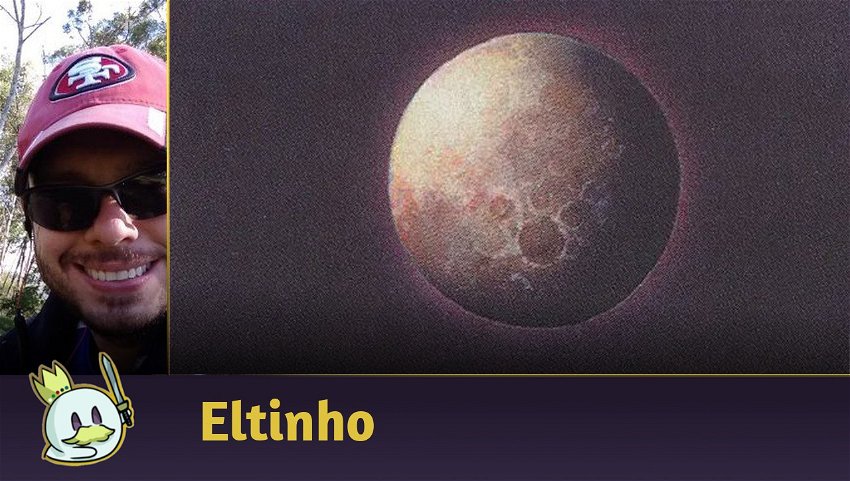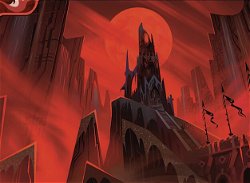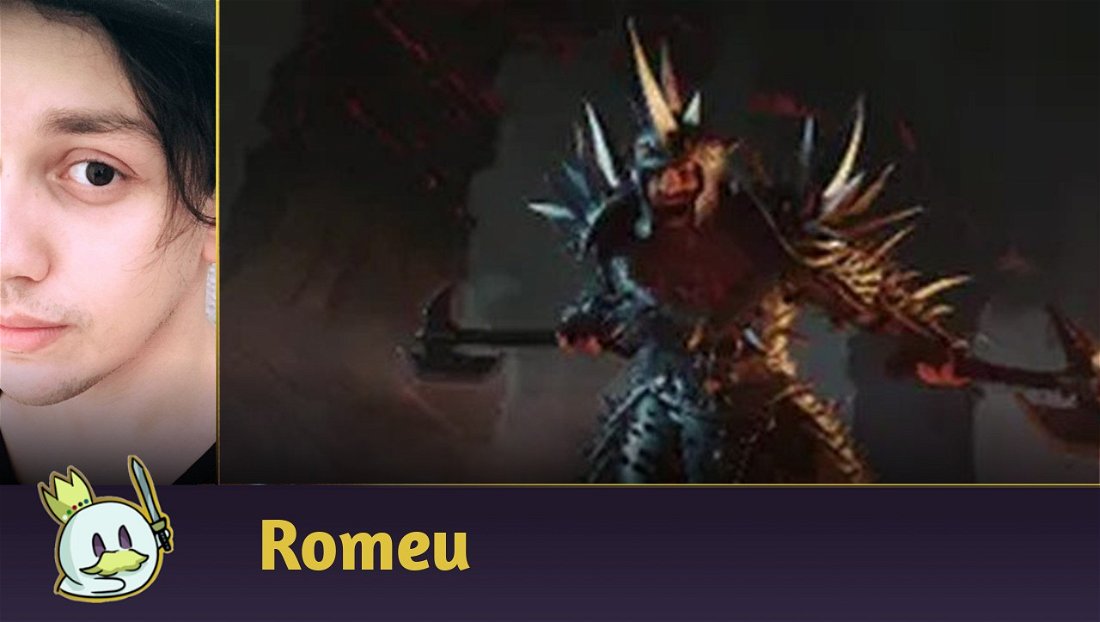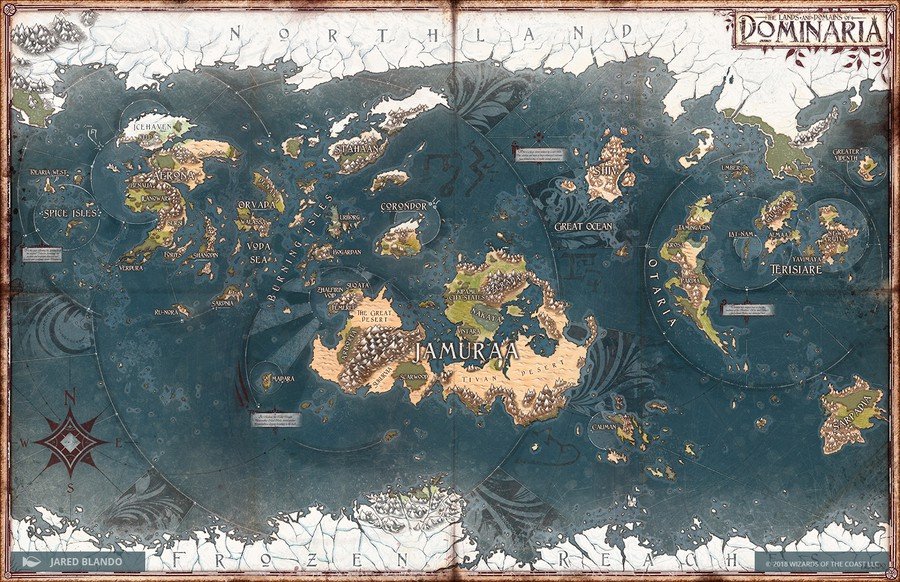Presentation
Today's article is special, as the deck analyzed is my weapon of choice in Legacy, a faithful companion since 2018, the year I returned to Magic after a long break in 2012. From 2018 onwards, it has undergone numerous changes, it has gone up and went down the tier, changed its structure, and recently gained a lot of new stuff to establish itself as a highly valid option and one of the best blue-free decks in the format.
Below is the reference list for the article.
Getting to Know the Deck
First, let's talk about the concept of Prison: they seek to generate elements that limit players' resources, built in such a way that this limitation doesn't affect them or does it in the least possible way. This is an element that has been around since the release of Magic, anchored in the traditional combination of Winter Orb and Icy Manipulator.

Over time, more cards aimed at restricting the game were released, and two of these form the core of this deck: Blood Moon and Chalice of the Void (usually played with X = 1). Mono Red Prison is built to fit any of these cards preferably on the first turn, and these effects while symmetrical, in theory, basically don't affect us — all of its spells are red or colorless, and none of them cost 1 mana.
Trinisphere and Magus of the Moon usually complete the Prison kit — these cards are commonly called “lock-pieces”.
Deck Assembly
While there are a few other versions of Red Prison — Planeswalker, Jokulhaups, and Giants are the ones that come to my mind right now — the list we mentioned (aka Dragon, Moon, or Red Stompy) has established itself as the most popular.
Of the above cards, I can confidently say that 46 are currently key and only a lot of mental gymnastics justifies cutting any one of them: 4 each from Chalice of the Void, Blood Moon, Fable of the Mirror-Breaker, Fury, Goblin Rabblemaster, Simian Spirit Guide, Chrome Mox, Ancient Tomb, City of Traitors, Shatterskull Smashing and Mountain, plus at least 2 Den of the Bugbear.
Among the remaining 14 spaces, most lists run 1 or 2 more lands, usually extra Dens and/or Sokenzan, Crucible of Defiance.
The rest ends up being a mix of lock-pieces — Trinisphere, Magus of the Moon or Maddening Hex; extra aggression – Legion Warboss, Laelia, the Blade Reforged, Squee, Dubious Monarch, Fireflux Squad, Caves of Chaos Adventurer, Hazoret the Fervent or Anje's Ravager; or utility cards — Unlicensed Hearse, Dead//Gone, Bonecrusher Giant or Chandra, Torch of Defiance.
Mulligan
Since this is a Prison deck, your starting hand and mulligan are essential. A 7-card hand with no play on the first turn is only justified if you know your opponent's deck and the hand is strong against that particular archetype, otherwise Mulligan and come back with 6 cards.
By the way, this is a deck that gains a huge advantage when playing in known Metagames, as some decks ignore some lock-pieces and others are more vulnerable to Chalice of the Void for 0, for example.
Hands without any lock-pieces can be kept if they can put pressure on right away, like a Goblin Rabblemaster on 1 followed by a Legion Warboss on 2. If you are in play and have the option to do either Moon or Chalice at 1 and don't know the opponent, I suggest giving preference to Moon, as it is much more effective when you don't give your opponent the chance to crack a fetch land.
Ultimately, between playing a Goblin or a Fable of the Mirror-Breaker, I tend to cast the enchantment first, unless it's a game of pure aggression. Don't be afraid to mulligan with this deck, it works well with reduced cards, especially when you also reduce your opponent's options.
Postures
On the one hand, its game plan is simple: hold the game with some lock-piece and use some 3-mana creature to finish the opponent before they manage to play around you.
But this is a deck with plenty of small decisions that can affect how the game plays out: what card to print on Mox, what lock-piece to bait to pull a Force of Will, what's the best sequence to play your lands to not take as much damage, or waste time with sacrificing City of Traitors or Den of the Bugbear coming into play tapped.
You have to plan ahead, always imagining that your opponent will have an answer to your first or second threat. The addition of Fable of the Mirror-Breaker added an element of card filtering that the deck never had, and allows it to work with fewer lands than the old Planeswalker-based playlists.
Sideboard Building

Regarding the sideboard, the first big dilemma concerns your choice of graveyard hate. Leyline of the Void is the most obvious choice, and now you even have Fable to get rid of redundant copies. Its biggest problem is being vulnerable to Force of Vigor and Serenity.
The other valid option, as it's also a “turn 0” answer (which you can do even if you're on the draw on your opponent's turn 1) is Faerie Macabre. It lacks the enchantment's impact and is vulnerable to discard spells, but on the other hand, it forces the opponent to respond at two attack angles (board and hand). It will be a matter of reading your Metagame to understand which one is better suited for it.

Another contentious point is whether to use Pyroblast and/or Red Elemental Blast. It might seem counterintuitive to have one mana cards in a Chalice deck, as not only are there many blue decks out there, most of them are equipped with a monster known as Murktide Regent, which is a card you need to respect.
In theory, if you've managed to fit a Chalice at 1, you can afford to have Blasts killed and there's always the possibility to use dead cards as fuel for Chrome Mox or the second chapter of Fable of the Mirror-breaker.

Two cards that have appeared to deal with more drawn-out games are the newbies Caves of Chaos Adventurer and Maddening Hex. Other cards that often appear on sideboards, in addition to those listed above, are Magus of the Moon, Trinisphere, Chandra, Awakened Inferno, Chandra, Torch of Defiance, Ensnaring Bridge, Sulfur Elemental, Abrade and Torpor Orb.
Sideboard Guide
Izzet Aggro
In a more reasonable Metagame, the Dead//Gone in the main deck would be replaced by Bonecrusher Giant, but as I said before, the lurking presence of Murktide Regent, a card that ignores most of your lock-pieces and has no easy answer, leads to this adaptation and Dead//Gone needs to be part of the 60.
Unlicensed Hearse helps to contain the threat in addition to holding back Dragon's Rage Channeler.
Post-side, a current of thought recommends also going up at 4 Leyline of the Void. I don't really like this line, but if you think the risk is worth it, also remove 2 Goblin Rabblemaster and 2 Unlicensed Hearse.
IN:

OUT:

Death & Taxes
Once one of our worst matchups, Fury served to level things up. Although Chalice of the Void looks cool to stop Aether Vial, Mother of Runes and Swords to Plowshares, it actually ends up taking a Flickerwisp and doesn't anything.
Their deck is mostly immune to Prison's lock-pieces, so the best way is to get some Goblins in really fast and kill them before Stoneforge Mystic takes over the board.
IN:

OUT:

Burn
Game 1 can be easy if you play a Chalice of the Void soon. Fury is wonderful at dealing with their threats, especially Eidolon of the Great Revel.
Post-side, Artifacts are no longer a guarantee of a won game, as they bring Smash to Smithereens.
IN:

OUT:

Blue Control (Jeskai, Bant, Grixis and Czech Pile
While Chalice of the Void is good against these decks, they have many ways to deal with it in the main deck — Prismatic Ending, Kolaghan's Command and Hidetsugu Consumes All.
Blood Moon (except against Jeskai), on the other hand, tends to kill their game. Game 1 isn't easy at all, you need to know which card you are willing to deliver to a counter and try to carry the second wave to victory.
IN:

Jeskai
OUT:

Bant
OUT:

Grixis, Czech Pile
OUT:

8-Cast
This is a matchup that you gain a huge advantage if you already knew your opponent in advance because here you want to make Chalice of the Void to 0 and not to 1. Don't forget that Blood Moon kills Urza's Saga doesn't just turn it into a Mountain.
Unlicensed Hearse can keep Emry, Lurker of the Loch in check, and the second half of Dead//Gone can handle construct tokens. The real problem is Kappa Cannoneer.
IN:

OUT:

Storm
Storm is a deck that has a lot of trouble playing around lock-pieces, Trinisphere is a real nightmare for them. Fiery Confluence is important to counter the Empty the Warrens plan that they usually bring.
IN:

OUT:

Oops, All Spells
Game 1 depends on who goes first. If you do, cast Trinisphere ASAP! Chalice of the Void is harder, as they have both 0- and 1-cost spells, but overall, 0-cost spells lock them up better.
Post-side, this is the matchup where Faerie Macabre is much better than Leyline of the Void, as they usually have 4 Force of Vigor.
IN:

OUT:

Mirror Match
The mirror is a hideous game, where both are full of dead cards and whoever manages to have less of them disturbing the flow, has the advantage. Fable is excellent for achieving this.
On the side, you take out as many dead lock-pieces for anything you need.
IN:

OUT:

Conclusion
That's it for now, my friends, I hope you enjoy this deck as much as I do! In case of any doubts, leave it in the comments!
Until next time!















— Kommentare 0
, Reaktionen 1
Sei der erste der kommentiert